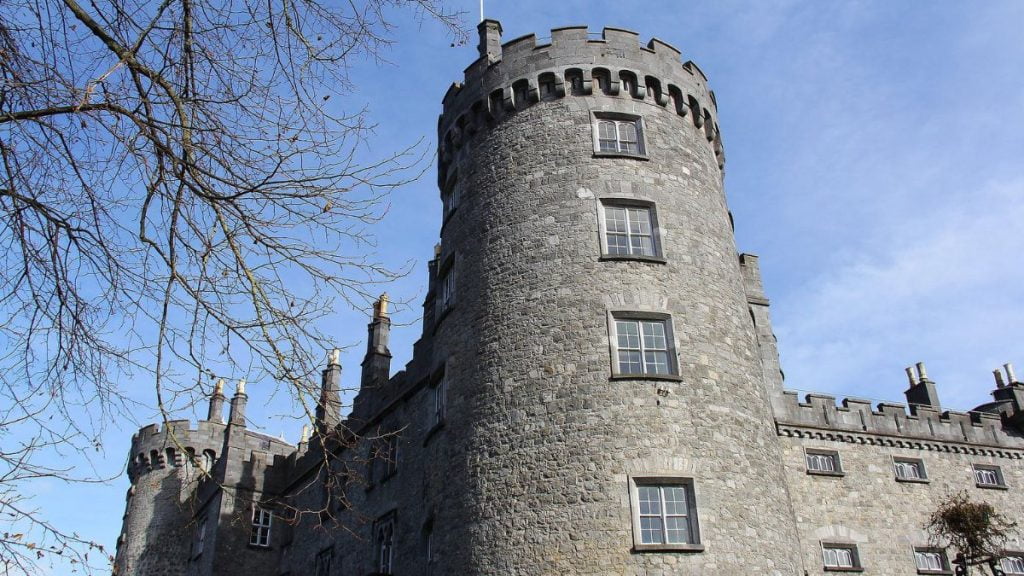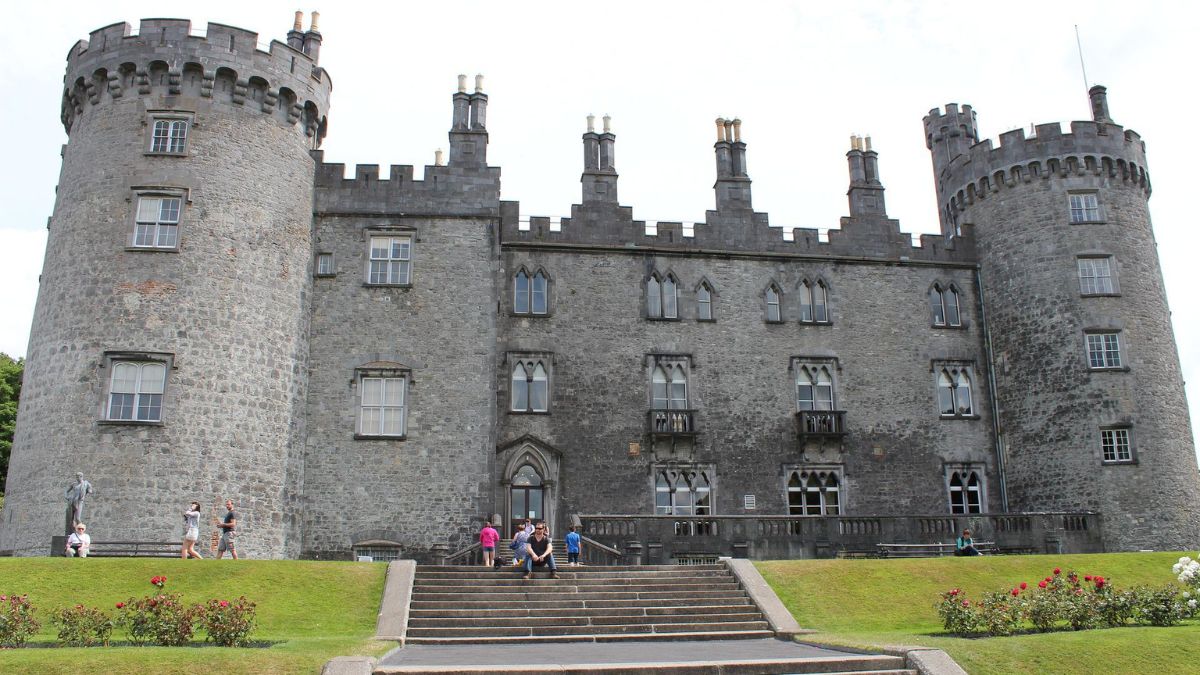Kilkenny Castle has been continuously inhabited for longer than almost any other structure in Ireland. After its original construction, shortly after the Norman invasion of Ireland, the castle has undergone several renovations and alterations over the last 800 years.
Kilkenny Castle, which has been available to the public year-round, was originally built as a defensive fortress in the thirteenth century and was extensively remodeled in the Victorian era, with the original furnishings, artwork, and decorative items still on display. The Butler family’s historic mansion is open to the public and may be explored on a self-guided or professionally guided tour. The dining room, Victorian nursery, and picture gallery with the handpainted hammer-beam ceiling are all part of the Castle tour.
History

Kilkenny Castle, first erected in the 12th century, was the primary residence of the Butler earls, marquesses, and dukes of Ormond for about 600 years. Kilkenny became a prosperous and important city under the leadership of the Butler family. There is still a sense of its former vivacity now. The castle’s enormous grounds serve as a park, while the structure itself had a makeover during the Victorian era. The Irish government legally assumed control of the building in 1969, and since then, it has undergone extensive repair efforts. These days, tens of thousands of people go there annually.
There is a central building with a library, a drawing-room, a nursery, and bedrooms that are all done in the 1830s style. Magnificent Picture Gallery may be found in the east wing of Kilkenny Castle. This gorgeous 19th-century room was constructed largely to accommodate the extensive art collection owned by the Butler family.
Prior to William Marshal’s construction of a stone castle in 1192, the site had been occupied by a wooden fortress built by Richard Fitz Gilbert de Clare during the Anglo-Norman era. In 1391, the castle was purchased by the Butler family, who made it their home for the following half-millennium. The Butler family, devout Protestants, supported Charles I throughout the Irish Confederate Wars in the 1640s. But the Catholic rebels took Kilkenny Castle, and Cromwell had to besiege it to conquer Ireland. After returning from exile in 1661, Butler transformed the old fortress into a sleek chateau.
The Butlers were having a harder and harder time bringing in enough money to maintain the castle, so they only did little repairs as they could afford them. In 1904 King Edward VIII and Queen Alexandra of the United Kingdom visited Ireland, and they were hosted at Kilkenny Castle by James Butler, 21st Earl of Ormonde. The future of the castle was at risk after James Butler’s death because of the enormous amount of death duties owed. During the Irish Civil War in 1922, the Irish Free State laid siege to it, causing significant damage. In 1935, the Butler family packed up and left the castle for good, relocating to London. In 1967, it was officially sold for £50 to the Castle Restoration Committee. It is now officially part of Kilkenny and continues to draw visitors like no other attraction in the area.
More on Animesonnet.com: Balmoral Castle, here
The castle may be visited at any time of year. However, between November and January, visitors must take a 45-minute guided tour. During the other times of the year, visitors may choose between self-guided tours presented in many languages and semi-regularly scheduled guided tours. In the summer, Kilkenny Castle’s gardens and grounds come alive with lush vegetation, making them ideal for a leisurely stroll or a more strenuous hike to blow off some steam.
Every year in the month of August, Kilkenny plays home to a massive arts festival. Keep an eye out for the majestic Entrance Hall, the Chinese Withdrawing Room (which still has remnants of handpainted Chinese-style wallpaper from the 1820s), and the enormous Carrara marble fireplace by John Hungerford Pollen.
Kilkenny Castle, built in the early 1300s, is one of the biggest and most significant castles in Irish history. The castle overlooks Kilkenny and a river crossing from its perch on a rocky outcrop. Built by William Marshal, 4th Earl of Pembroke, the castle eventually became the seat of the powerful Butler family, who were also Norman in origin and used it to exert control over most of the southeast region of Ireland for 600 years.

The only remaining medieval section of the castle, the so-called “medieval room,” is located in the basement of the northwest tower, and the rest of the castle’s interiors are open for self-guided tours, including the dining room, drawing room, library, withdrawing rooms, and various bedrooms and bathrooms dating back to the 1830s. Access is restricted to guided tours only at certain periods of the year, which we believe is a great idea.
You can’t miss Kilkenny Castle, which is located smack dab in the middle of the historic district. Kilkenny MacDonagh railway station (Dublin – Waterford line, regular trains in either direction; 90 minutes to Dublin; 35 minutes to Waterford) is a short 15-minute walk away, and route 600, which connects Dublin and Cork through Waterford, stops here as well. Take the M9 south from Dublin to Junction 8 and then take the N10 in the direction of Kilkenny. Plenty of parking is available near the castle, which is located on The Parade in the heart of town.
Conclusion
If you are interested in medieval castles as we are, your visit to Kilkenny Castle will not be the highlight of your trip to Ireland. Cahir Castle or Bunratty are excellent options. Kilkenny Castle, on the other hand, is unlike any other Irish landmark since it combines the architectural styles of the medieval castle with the nineteenth-century great mansion. Kilkenny Castle is worth seeing since it has been continuously used as a private house for approximately 600 years.

